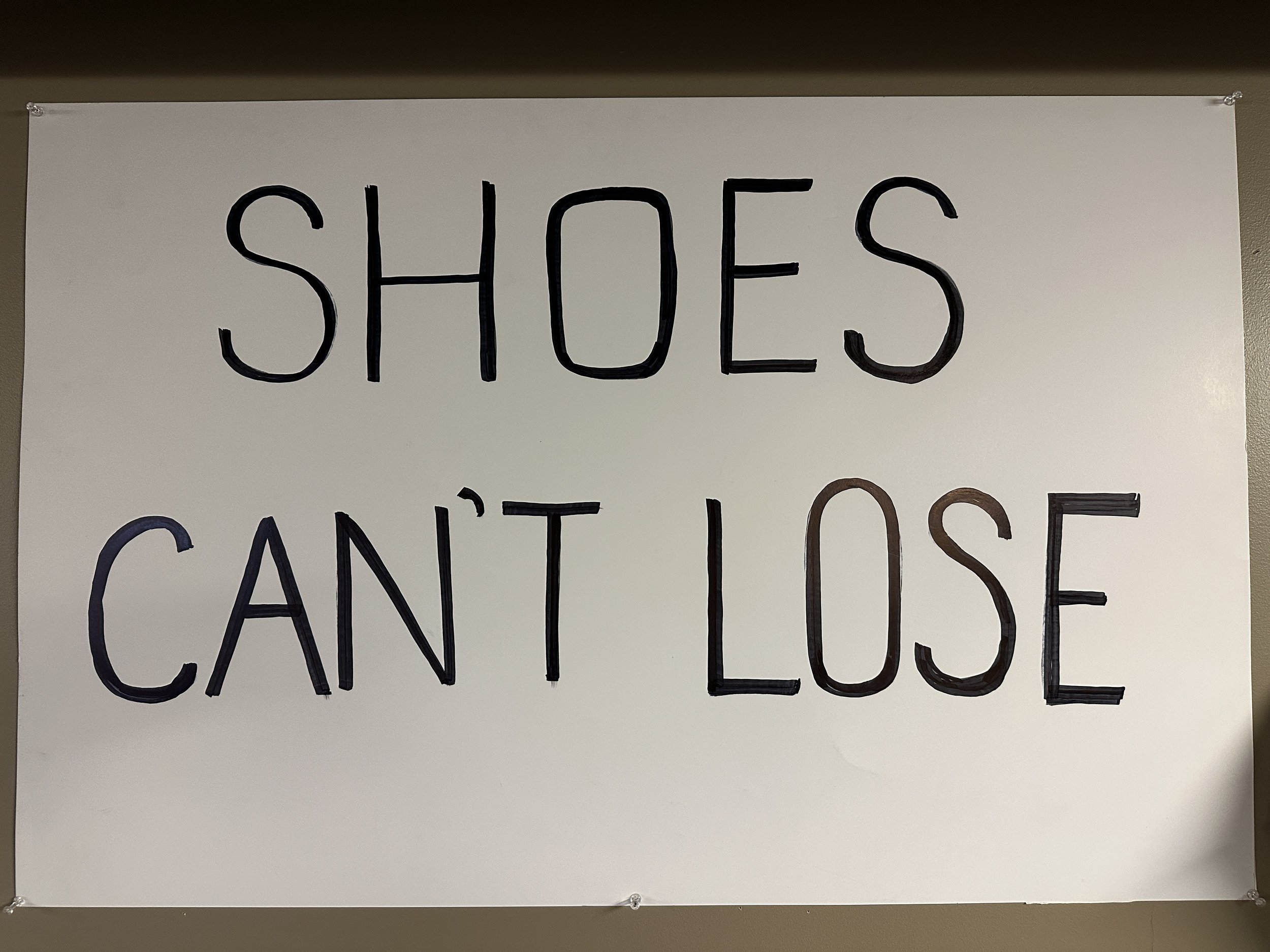Consider The Horseshoe Crab
If you Google “What animal has saved the most human lives?” the first answer—surprisingly or not—is the horseshoe crab.
In indirect ways, they’ve been saving lives for centuries. But in a more immediate sense, their impact is built into who they are: the mysterious blue blood of Limulus polyphemus coagulates in the presence of harmful bacteria, and since the 1970s, it’s been used to test the safety of vaccines. If you’ve received any medical injection since 1977—polio, flu, Covid-19—that shot was almost certainly tested with Limulus Amebocyte Lysate (LAL), the diagnostic marvel extracted from the blood of a horseshoe crab.
Assistant Head of School Abby Kirchner in the official Stone HSC mascot costume, built by Dean of Students Alex Funnell (because they are hard to find online)..
For nearly four years, our community has been talking about horseshoe crabs. Like all things in this magical community, what started as an offhand joke gained its own internal logic. The randomness of it—the fact that of course this is the thing we’d obsess over—somehow made perfect sense at a school like Stone, where obsessive curiosity rules the day.
And like all things in this magical community, it’s that obsessive curiosity that creates the arc of our best work.
As it turns out, our (human) relationship with these ancient creatures is…complex. For centuries, we’ve called them “crabs,” even though they’re more closely related to spiders, scorpions (or even ticks). Despite being one of the oldest living species—dating back nearly 300 million years—something like 3 million horseshoe crabs were killed in the 1800s so that they could be used for fertilizer.
Their eggs sustain Red Knots—migratory shorebirds that travel 10,000 miles from Patagonia to the Arctic Circle twice a year. The timing is precise: Red Knots rely on horseshoe crab spawning to fuel their journey. When egg counts drop, they starve. They fail to complete their migration. They die.
Just this year, the National Shorebird Conservation Plan listed the Red Knot as “highly imperiled” due to human impact, due to climate change. Due to a 90% decline in horseshoe crab egg production over the last 20 years which has led to a 75% decline in the Red Knot population. As it always does, one gear turns another. The loss of the Red Knot population could very well lead to the unraveling of a number of interconnected ecosystems.
Losing one might very well mean losing the other. And might very well mean losing a whole lot more.
Entire ecosystems depend on them: humans, birds, maybe even the stability of our climate. We don’t even know that they aren’t crabs.
They’ve quietly survived five mass extinctions and sometimes it feels like we’re doing everything we can to stop them from surviving a 6th.
It’s not exactly our slogan…but it’s not not our slogan.
Four years ago we began talking about horseshoe crabs and four years ago, our students came together as a community of concerned citizens to write the first draft of a climate pledge. As of this year, our community – our parents, our students, our faculty, our trustees – have planted 13,000 trees as just one act of care for the planet we live on. We plant trees because it’s something we can do, we plant trees because we believe in our Mission, we plant trees because we think stewardship and citizenship are the same things. We do it because we do not accept that the climate war is lost, but we do understand that the clock is ticking, that the work is urgent, that the work matters.
We do it because the planet matters, because the future matters, and we happen to believe that we play a role in determining who and what will survive the sixth extinction.
Which, of course, is why we chose the horseshoe crab as our mascot. Because it has survived. Because it serves. Because it saves lives. Because, in its own way, it is fighting for this planet.
Because it is—yep—Curiously Different.
And because it remains deeply committed to making the world a measurably better place.

